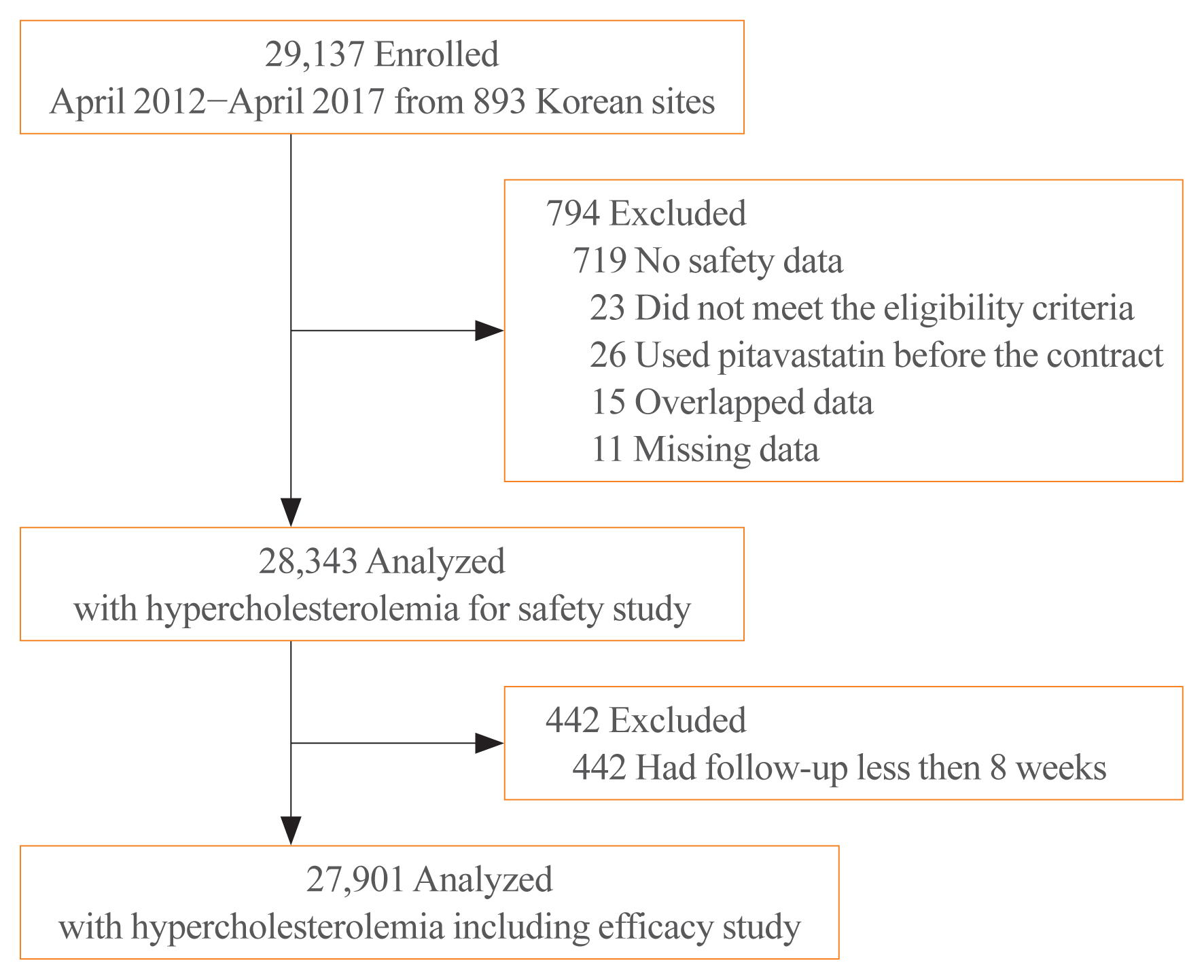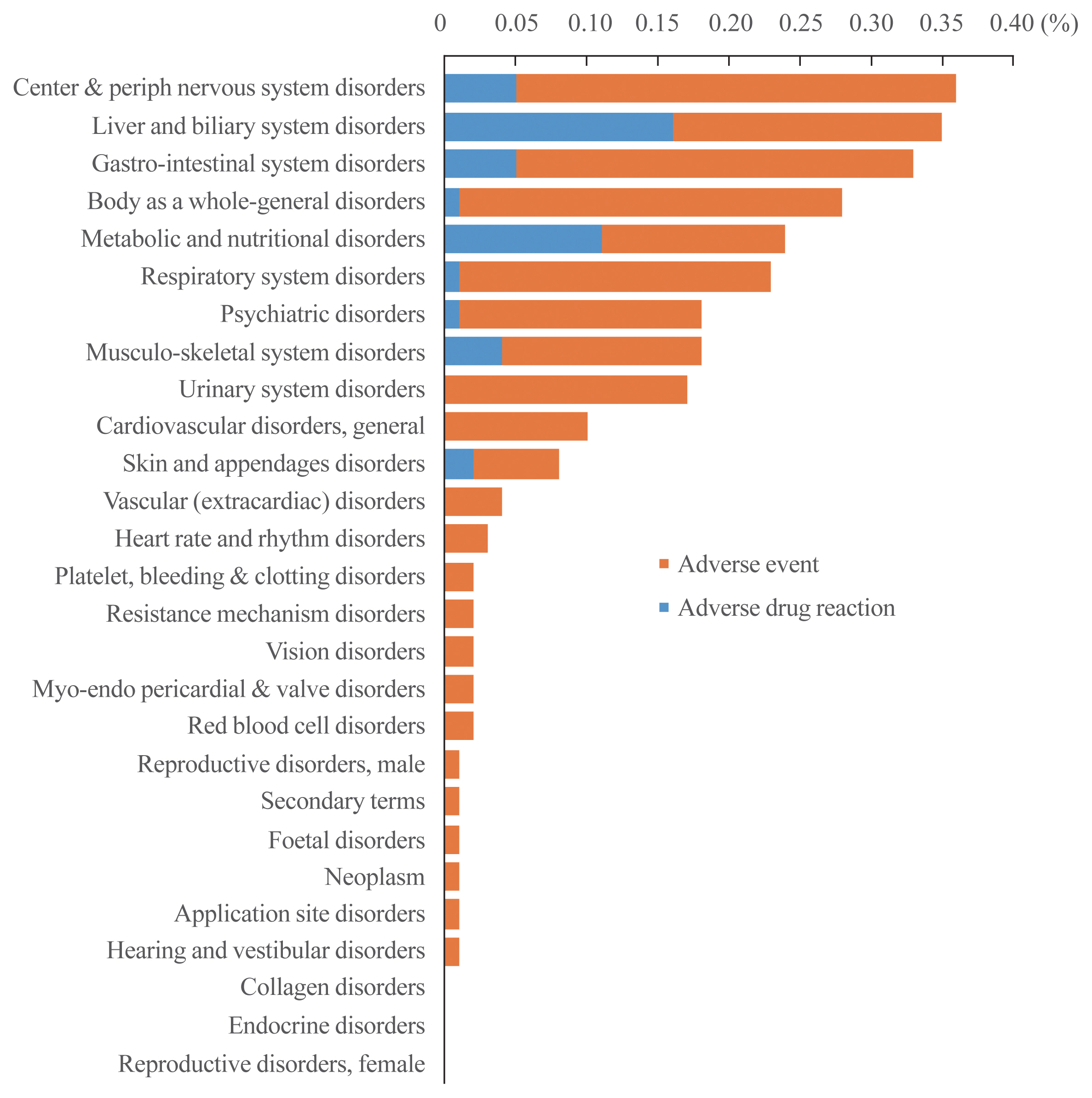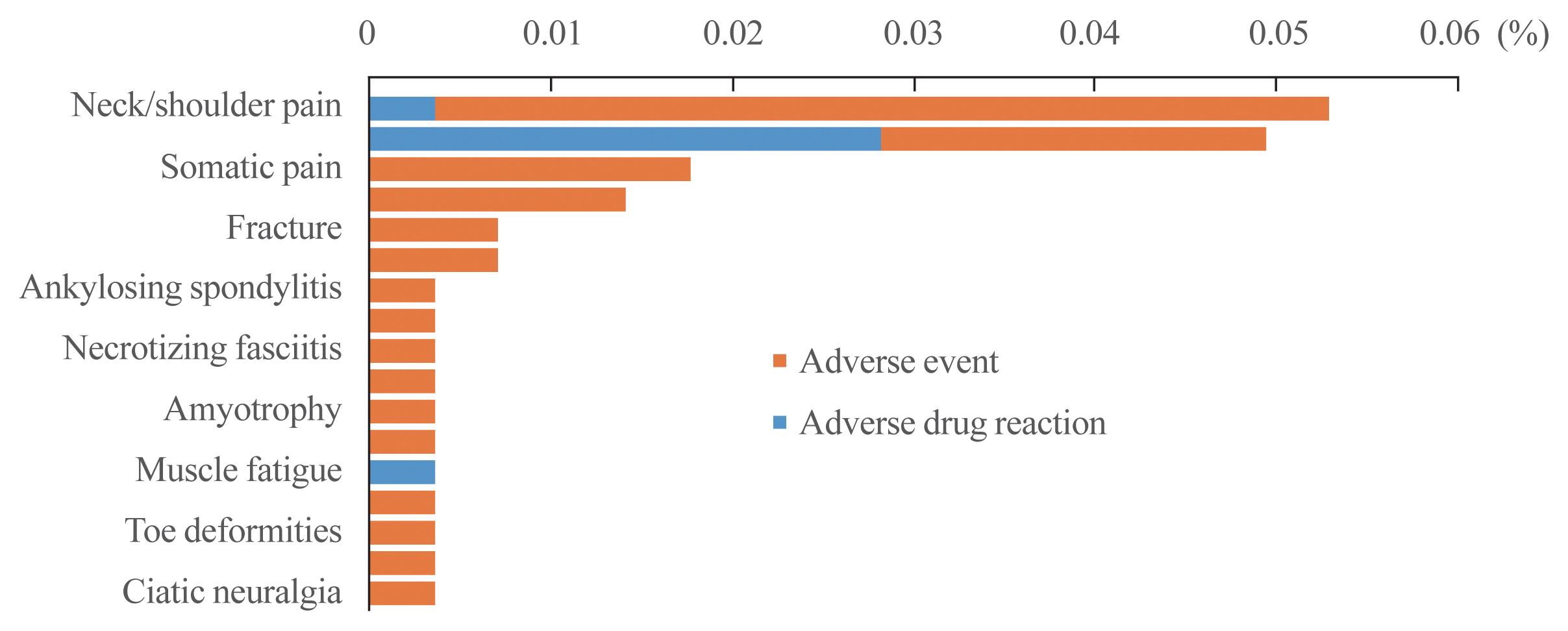Endocrinol Metab.
2020 Dec;35(4):882-891. 10.3803/EnM.2020.723.
Efficacy and Safety of Pitavastatin in a Real-World Setting: Observational Study Evaluating SaFety in Patient Treated with Pitavastatin in Korea (PROOF Study)
- Affiliations
-
- 1Department of Endocrinology, Kyung Hee University Hospital at Gangdong, Kyung Hee University School of Medicine, Seoul, Korea
- 2Division of Endocrinology and Metabolism, Department of Internal Medicine, Bucheon St. Mary’s Hospital, College of Medicine, The Catholic University of Korea, Seoul, Korea
- KMID: 2511015
- DOI: http://doi.org/10.3803/EnM.2020.723
Abstract
- Background
While randomized controlled trials provide useful information about drug safety and efficacy, they do not always reflect the observed results in the real world. The prospective, observational, non-comparative trial in South Korea was designed to evaluate the efficacy and safety of pitavastatin in clinical practice in 28,343 patients.
Methods
This study was conducted in 893 facilities in Korea from April 2, 2012 to April 1, 2017. This study was designed to administer 1, 2, or 4 mg pitavastatin to patients with hyperlipidemia at the age of 20 or older for at least 8 weeks.
Results
For 126 days of mean duration of administration of pitavastatin, the % change of low density lipoprotein cholesterol indicated a dose dependent reduction: –23.4%, –29.1%, and –35.2% in the 1, 2, and 4 mg groups, respectively in patients who have not been treated with lipid lowering medications prior to study. Only 1.74% (492/28,343) of pitavastatin-treated patients experienced adverse events, of which 0.43% (123/28,343) were adverse drug reactions. Less than 1% of patients experienced the grade 2 or more toxicity (Common Terminology Criteria for Adverse Events v4.03) in alanine aminotransferase, aspartate aminotransferase, serum creatinine, and serum creatine phosphokinase. Although there were no rhabdomyolysis in 28,343 patients, 0.04% of patients had been reported pitavastatin-related musculoskeletal disorders.
Conclusion
Overall, this observational study showed that pitavastatin was well tolerated and effectively modified the lipid profile, reducing cardiovascular and cerebrovascular risk in Korean patients with hypercholesterolemia in the real world.
Keyword
Figure
Reference
-
1. World Health Organization. Cardiovascular diseases (CVDs) [Internet]. Geneva: WHO;2017. [cited 17 May 2017]. Available from: https://www.who.int/news-room/fact-sheets/detail/cardiovascular-diseases-(cvds).2. Rhee EJ, Kim HC, Kim JH, Lee EY, Kim BJ, Kim EM, et al. 2018 Guidelines for the management of dyslipidemia. Korean J Intern Med. 2019; 34:723–71.
Article3. Saito Y, Teramoto T, Yamada N, Itakura H, Hata Y, Nakaya N, et al. Clinical efficacy of NK-104 (pitavastatin), a new synthetic HMG-CoA reductase inhibitor, in the dose finding, double blind, three-group comparative study. J Clin Therap Med. 2001; 17:829–55.4. Collins R, Reith C, Emberson J, Armitage J, Baigent C, Blackwell L, et al. Interpretation of the evidence for the efficacy and safety of statin therapy. Lancet. 2016; 388:2532–61.
Article5. Ose L, Budinski D, Hounslow N, Arneson V. Comparison of pitavastatin with simvastatin in primary hypercholesterolaemia or combined dyslipidaemia. Curr Med Res Opin. 2009; 25:2755–64.
Article6. Kwon JE, Kim Y, Hyun S, Won H, Shin SY, Lee KJ, et al. Cholesterol lowering effects of low-dose statins in Korean patients. J Lipid Atheroscler. 2014; 3:21–8.
Article7. Lee SH, Chung N, Kwan J, Kim DI, Kim WH, Kim CJ, et al. Comparison of the efficacy and tolerability of pitavastatin and atorvastatin: an 8-week, multicenter, randomized, open-label, dose-titration study in Korean patients with hypercholesterolemia. Clin Ther. 2007; 29:2365–73.
Article8. Taguchi I, Iimuro S, Iwata H, Takashima H, Abe M, Amiya E, et al. High-dose versus low-dose pitavastatin in Japanese patients with stable coronary artery disease (REAL-CAD): a randomized superiority trial. Circulation. 2018; 137:1997–2009.9. Newman CB, Preiss D, Tobert JA, Jacobson TA, Page RL 2nd, Goldstein LB, et al. Statin safety and associated adverse events: a scientific statement from the American Heart Association. Arterioscler Thromb Vasc Biol. 2019; 39:e38–81.
Article10. De Alava E, Sola JJ, Lozano MD, Pardo-Mindan FJ. Rhabdomyolysis and acute renal failure in a heart transplant recipient treated with hypolipemiants. Nephron. 1994; 66:242–3.
Article11. Fernandez Zatarain G, Navarro V, Garcia H, Villatoro J, Calvo C. Rhabdomyolysis and acute renal failure associated with lovastatin. Nephron. 1994; 66:483–4.
Article12. Farmer JA, Torre-Amione G. Comparative tolerability of the HMG-CoA reductase inhibitors. Drug Saf. 2000; 23:197–213.
Article13. Manoukian AA, Bhagavan NV, Hayashi T, Nestor TA, Rios C, Scottolini AG. Rhabdomyolysis secondary to lovastatin therapy. Clin Chem. 1990; 36:2145–7.
Article14. Pfizer Limited. Atorvastatin 10 mg Film Coated Tablets: Summary of Product Characteristics (SmPC) [Internet]. The electronic medicines compendium (emc). 2019. [cited 2020 Oct 29]. Available from: https://www.medicines.org.uk/emc/product/4109/smpc#gref .15. Teramoto T. Pitavastatin: clinical effects from the LIVES Study. Atheroscler Suppl. 2011; 12:285–8.
Article16. Betteridge J. Pitavastatin: results from phase III & IV. Atheroscler Suppl. 2010; 11:8–14.17. Yokote K, Shimano H, Urashima M, Teramoto T. Efficacy and safety of pitavastatin in Japanese patients with hypercholesterolemia: LIVES study and subanalysis. Expert Rev Cardiovasc Ther. 2011; 9:555–62.
Article18. National Cancer Institute Common Terminology Criteria for Adverse Events (CTCAE) v403. Bethesda: U.S. Department of Health and Human Services, National Institutes of Health;2010.19. Stone NJ, Robinson JG, Lichtenstein AH, Bairey Merz CN, Blum CB, Eckel RH, et al. 2013 ACC/AHA guideline on the treatment of blood cholesterol to reduce atherosclerotic cardiovascular risk in adults: a report of the American College of Cardiology/American Heart Association Task Force on Practice Guidelines. J Am Coll Cardiol. 2014; 63(25 Pt B):2889–934.20. Cohen DE, Anania FA, Chalasani N. National Lipid Association Statin Safety Task Force Liver Expert Panel. An assessment of statin safety by hepatologists. Am J Cardiol. 2006; 97(8A):77C–81C.
Article21. Bruckert E, Hayem G, Dejager S, Yau C, Begaud B. Mild to moderate muscular symptoms with high-dosage statin therapy in hyperlipidemic patients: the PRIMO study. Cardiovasc Drugs Ther. 2005; 19:403–14.
Article22. Davidson MH, Clark JA, Glass LM, Kanumalla A. Statin safety: an appraisal from the adverse event reporting system. Am J Cardiol. 2006; 97(8A):32C–43C.
Article23. Adhyaru BB, Jacobson TA. Safety and efficacy of statin therapy. Nat Rev Cardiol. 2018; 15:757–69.
Article24. Sylvain-Moore H, Worden JP Jr. Lovastatin-associated rhabdomyolysis. Heart Lung. 1991; 20(5 Pt 1):464–6.25. Waclawik AJ, Lindal S, Engel AG. Experimental lovastatin myopathy. J Neuropathol Exp Neurol. 1993; 52:542–9.
Article26. Wallace CS, Mueller BA. Lovastatin-induced rhabdomyolysis in the absence of concomitant drugs. Ann Pharmacother. 1992; 26:190–2.
Article27. Hume AL. Comment: lovastatin-induced rhabdomyolysis in the absence of concomitant drugs. Ann Pharmacother. 1992; 26:1303.
Article28. Pedro-Botet J, Nunez-Cortes JM, Flores JA, Rius J. Muscle symptoms related with statin therapy in general practice. Atherosclerosis. 2015; 241:e197.
Article29. Khan A, Maki KC, Ito MK, Cohen JD, Sponseller CA, Bell M, et al. Statin associated muscle symptoms: characteristics of patients and recommendations by providers. J Clin Lipidol. 2015; 9:460.
Article30. Crouse JR, Grundy SM. Effects of alcohol on plasma lipoproteins and cholesterol and triglyceride metabolism in man. J Lipid Res. 1984; 25:486–96.
Article31. Wakabayashi I. Alcohol intake and triglycerides/high-density lipoprotein cholesterol ratio in men with hypertension. Am J Hypertens. 2013; 26:888–95.
Article32. Ridker PM, Danielson E, Fonseca FA, Genest J, Gotto AM Jr, Kastelein JJ, et al. Rosuvastatin to prevent vascular events in men and women with elevated C-reactive protein. N Engl J Med. 2008; 359:2195–207.
Article33. Betteridge DJ, Carmena R. The diabetogenic action of statins: mechanisms and clinical implications. Nat Rev Endocrinol. 2016; 12:99–110.
Article34. Choi SH, Lim S, Hong ES, Seo JA, Park CY, Noh JH, et al. PROPIT: a PROspective comparative clinical study evaluating the efficacy and safety of PITavastatin in patients with metabolic syndrome. Clin Endocrinol (Oxf). 2015; 82:670–7.
Article35. Jeong HS, Hong SJ, Son S, An H, Kook H, Joo HJ, et al. Incidence of new-onset diabetes with 1 mg versus 4 mg pitavastatin in patients at high risk of developing diabetes during a 3-year follow-up. Cardiovasc Diabetol. 2019; 18:162.36. Choi JY, Choi CU, Hwang SY, Choi BG, Jang WY, Kim DY, et al. Effect of pitavastatin compared with atorvastatin and rosuvastatin on new-onset diabetes mellitus in patients with acute myocardial infarction. Am J Cardiol. 2018; 122:922–8.
- Full Text Links
- Actions
-
Cited
- CITED
-
- Close
- Share
- Similar articles
-
- Pitavastatin Induces Apoptosis of Cutaneous Squamous Cell Carcinoma Cells through Geranylgeranyl PyrophosphateDependent c-Jun N-Terminal Kinase Activation
- Effect of pitavastatin on erythrocyte membrane fatty acid content in patients with chronic kidney disease: two-arm parallel randomized controlled trial
- Effect of Pitavastatin Treatment on ApoB-48 and Lp-PLA2 in Patients with Metabolic Syndrome: Substudy of PROspective Comparative Clinical Study Evaluating the Efficacy and Safety of PITavastatin in Patients with Metabolic Syndrome
- Long-term efficacy and safety of tofacitinib in patients with ulcerative colitis: 3-year results from a real-world study
- Do Statins Counteract the Effect of Antidiabetic Drugs? Results of the SCEAD Study





